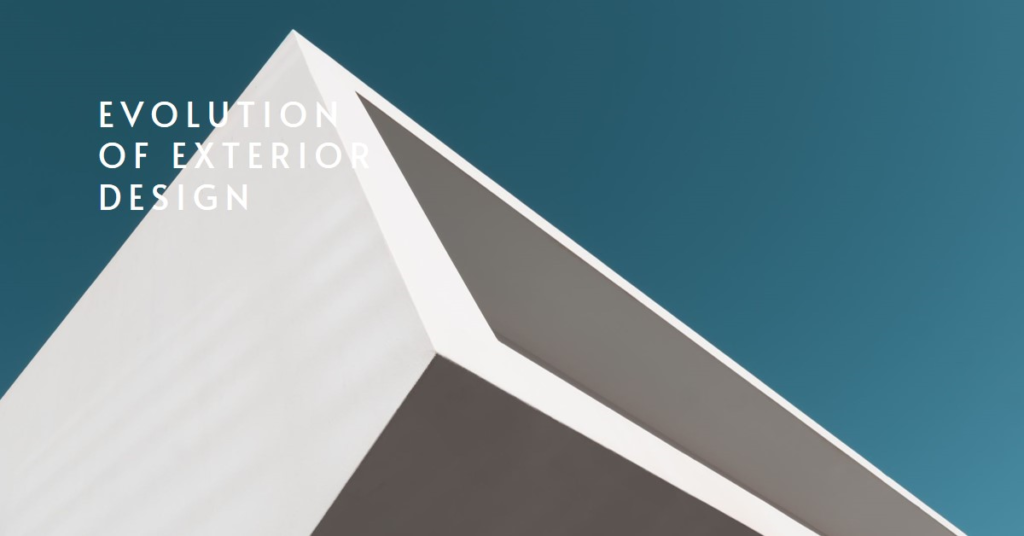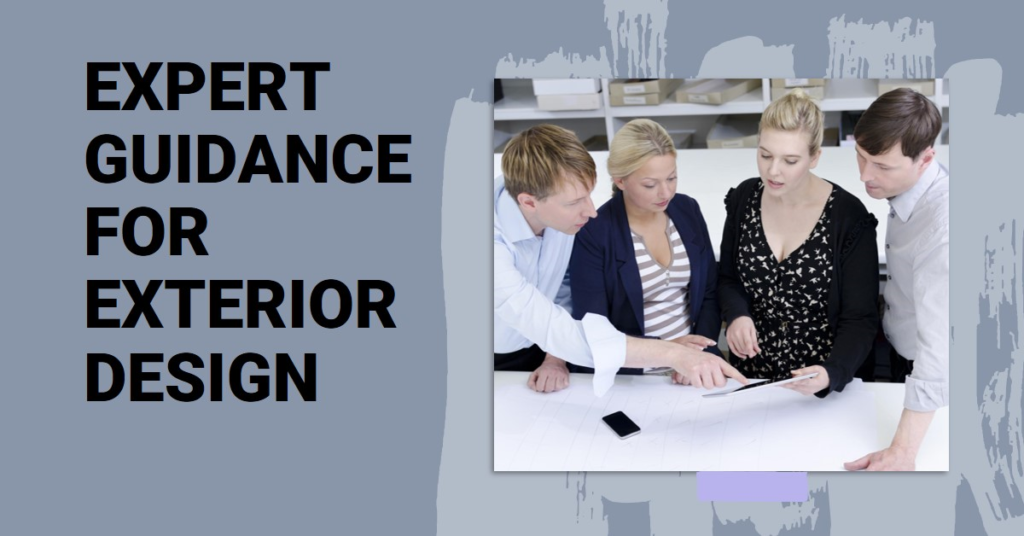
Table of Contents
- Introduction: The Ever-Changing Canvas of Exterior Design
- Ancient Beginnings: The Birth of Architectural Expression
- The Roman Influence: Innovation and Expansion
- Medieval Mystique: Fortresses and Cathedrals
- Renaissance Revival: A Return to Classical Ideals
- Baroque and Rococo: Drama and Extravagance
- Neoclassicism: A Return to Order and Simplicity
- Modernism: Embracing Function and Innovation
- Contemporary Trends: Sustainability and Technology
- Conclusion: The Future of Exterior Design
Introduction: The Ever-Changing Canvas of Exterior Design
Exterior design, much like any other artistic discipline, has undergone significant transformations throughout history. As societal values, technological advancements, and aesthetic preferences shift, so too do the facades of our buildings and homes. The evolution of exterior design is a fascinating journey through time, reflecting the changing tastes and innovations of each era.
From the grandiose columns of ancient Greek architecture to the sleek, minimalist lines of modernist structures, exterior design tells a story of human ingenuity and cultural expression. This blog post delves into the various stages of this evolution, exploring the key elements and influences that have shaped the way we design our exteriors today.
Ancient Beginnings: The Birth of Architectural Expression
The roots of exterior design can be traced back to ancient civilizations. In ancient Egypt, massive stone structures like the pyramids were not only feats of engineering but also statements of power and religious significance. The exteriors of these structures were adorned with intricate carvings and hieroglyphics, communicating stories of gods, pharaohs, and the afterlife.
Similarly, ancient Greece contributed significantly to the foundations of exterior design. Greek architecture is characterized by its symmetry, proportion, and the use of columns, such as the Doric, Ionic, and Corinthian orders. These elements emphasized balance and harmony, principles that continue to influence architectural design to this day.
The Roman Influence: Innovation and Expansion
Building upon Greek principles, the Romans introduced new materials and construction techniques that revolutionized exterior design. The use of concrete allowed for more ambitious projects, including the construction of the iconic Roman aqueducts and amphitheaters. The Colosseum, with its tiered arches and grandeur, remains a testament to Roman architectural prowess.
Roman exterior design was not just about functionality; it also emphasized grandeur and opulence. The exteriors of Roman buildings often featured elaborate frescoes, sculptures, and decorative elements that showcased the wealth and power of the empire. This blend of practicality and aesthetics set a precedent for future architectural endeavors.
Medieval Mystique: Fortresses and Cathedrals
The medieval period saw a shift towards more defensive and religious structures. Castles and fortresses were built with thick stone walls, narrow windows, and battlements, designed to withstand sieges and protect inhabitants. The exteriors of these structures were austere and imposing, reflecting the turbulent times.
In contrast, Gothic cathedrals from the same period showcased a different aspect of medieval exterior design. These structures, such as Notre-Dame de Paris, were characterized by pointed arches, ribbed vaults, and flying buttresses. The intricate facades were adorned with sculptures, stained glass windows, and gargoyles, blending structural ingenuity with spiritual symbolism.
Renaissance Revival: A Return to Classical Ideals
The Renaissance marked a revival of classical ideals in art and architecture. Inspired by ancient Greek and Roman principles, Renaissance architects like Filippo Brunelleschi and Leon Battista Alberti emphasized symmetry, proportion, and perspective in their designs. The exteriors of Renaissance buildings often featured columns, pilasters, and pediments, reflecting a renewed interest in classical antiquity.
This period also saw the rise of ornate detailing and the use of stucco and frescoes to decorate building exteriors. The façades of buildings like the Palazzo Rucellai and St. Peter’s Basilica in Vatican City exemplify the harmonious blend of classical elements and innovative design techniques that defined Renaissance architecture.
Baroque and Rococo: Drama and Extravagance
The Baroque period introduced a sense of drama and movement to exterior design. Architects like Gian Lorenzo Bernini and Francesco Borromini created dynamic structures with curved forms, elaborate ornamentation, and bold contrasts of light and shadow. The exteriors of Baroque buildings were designed to evoke emotional responses, with grand staircases, colonnades, and intricate detailing.
Following Baroque, the Rococo style emerged with a more playful and whimsical approach to exterior design. Rococo exteriors were characterized by their lightness, asymmetry, and use of pastel colors. Decorative elements such as shells, flowers, and scrolls adorned the façades, creating an air of elegance and refinement. This period emphasized artistic expression and individuality, setting the stage for future architectural innovations.


Neoclassicism: A Return to Order and Simplicity
In reaction to the excesses of Baroque and Rococo, the Neoclassical movement sought to return to the simplicity and order of classical antiquity. Inspired by the archaeological discoveries of ancient Greek and Roman sites, Neoclassical architects like Robert Adam and John Soane embraced clean lines, symmetry, and restrained ornamentation in their designs.
The exteriors of Neoclassical buildings often featured columns, pediments, and domes, evoking a sense of grandeur and timelessness. This style became particularly popular for public buildings, such as government offices and museums, symbolizing stability and authority. The influence of Neoclassicism can still be seen in many contemporary structures, highlighting its enduring appeal.
Modernism: Embracing Function and Innovation
The advent of the 20th century brought about a radical shift in exterior design with the rise of Modernism. Rejecting historical styles and ornamentation, Modernist architects like Le Corbusier, Ludwig Mies van der Rohe, and Frank Lloyd Wright embraced minimalism, functionality, and new materials like steel, glass, and reinforced concrete.
Modernist exteriors are characterized by their clean lines, flat roofs, and open floor plans. The emphasis on form following function led to the creation of innovative structures such as the Villa Savoye, the Farnsworth House, and the Guggenheim Museum. This movement prioritized simplicity and efficiency, influencing the design of residential, commercial, and public buildings worldwide.
Contemporary Trends: Sustainability and Technology
Today, exterior design continues to evolve, driven by advancements in technology and a growing emphasis on sustainability. Architects and designers are exploring new materials and construction methods to create energy-efficient and environmentally friendly buildings. Green roofs, solar panels, and smart glass are just a few examples of innovations shaping contemporary exteriors.
Moreover, contemporary exterior design often incorporates elements of biophilia, integrating natural features like living walls and water elements to create harmonious and healthy living environments. The use of digital tools and parametric design has also enabled architects to experiment with complex forms and structures, pushing the boundaries of what is possible in exterior design.
Conclusion: The Future of Exterior Design
As we look to the future, the evolution of exterior design promises to continue adapting to new challenges and opportunities. The integration of smart technologies, sustainable practices, and innovative materials will shape the buildings of tomorrow, reflecting our evolving values and aspirations. Understanding the rich history and diverse influences of exterior design allows us to appreciate the artistry and ingenuity that define our built environment.
The journey from ancient stone structures to cutting-edge, eco-friendly buildings is a testament to human creativity and resilience. By embracing both tradition and innovation, we can create exteriors that are not only aesthetically pleasing but also functional and sustainable, enriching our lives and communities for generations to come.


